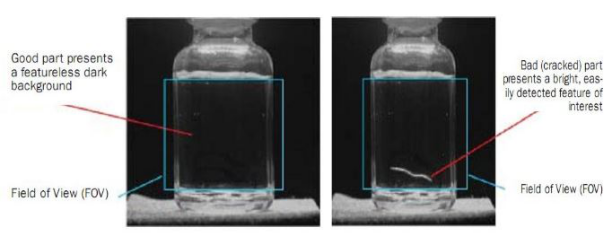Shenzhen Dehong Vision Technology Co., Ltd.
Phone: 137 2892 0823
Fax: 0755-2372-6873
Email: 908450505@qq.com
Website: www.dhkj123.com
en.dhkj123.com
Address: Goldman Sachs Building, No. 18 Shajing
Center Road, Baoan District, Shenzhen
The lighting system in a machine vision system is an extremely important part. How to choose a light source solution directly affects the subsequent image processing. Therefore, the illumination light source is far from simple to enhance the brightness of the image. A good lighting system can reduce a lot of image processing work and improve the efficiency of the entire machine vision system. So how to choose the right lighting system in the machine vision system?
Proper lighting is key to the success of machine vision applications, and it's the first thing to consider. How does lighting affect machine vision applications?
There are five aspects to consider when choosing a visual light source:
1. Is the surface smooth or rugged?
2. Is the surface dull or shiny?
3. Is the object curved or flat?
4. What is the color of the barcode or mark?
5. Does it detect moving or stationary objects?
The following editors collected some actual cases of machine vision lighting to illustrate, this will look more like a bit.
Case 1: Detecting cracks in glass using non-diffuse light
Test purpose: To detect cracks and scratches on glass containers
Lighting Technology: Dark Field
In this application, dark-field lighting is used to create a bright, easily detectable feature of interest against a dark background. In a dark field area, light passes directly through the transparent bottle. Most light that penetrates transparent objects is not detected by the camera. If the material is irregular, such as a crack, some light will highlight the irregularity. In particular scratches create an internal void where light is refracted and reflected, scattered at many angles including returned to the camera. These rays transform hard-to-detect scratches into bright features against a dark background.

Case 2: Creating contrast using color
A useful way to create a high-contrast image in machine vision applications is to illuminate objects with light of a specific wavelength (color). For black and white cameras, the wavelength of light can make features like color brighter or darker. Using the colored wheels as a reference, choose a light of the opposite color to darken the feature; or choose a light of the same color to brighten the feature. E.g:
1. If the feature you want to darken is red, use green light;
2. Use green light to make green features appear brighter;
3. Remember the difference between red and blue light engraved on aluminum.

Case 3: Eliminating reflections using infrared light
Machine vision systems rely on grayscale transformations in digital images. In many vision applications, ambient light brings unwanted bright reflections, which makes it difficult or impossible to detect features of interest. Infrared light can solve this problem.

Case 4: Using infrared light to eliminate color differences
Infrared light can be used to eliminate gray differences between colored objects. Dark objects absorb infrared wavelengths to create consistency, while others appear shadowy. This lighting scheme is useful for detecting inconsistencies in color or shadow changes.

How to choose the appropriate lighting solution for your own machine vision system needs to be considered from multiple aspects. It can be combined with the actual situation and used in your own vision solution. I believe it will do more with less!

attention
Shenzhen Dehong Vision Technology Co., Ltd.
Phone: 137 2892 0823
Fax: 0755-2372-6873
Email: 908450505@qq.com
Website: en.dhkj123.com
Address: 19th Floor, Goldman Sachs Building,
No. 18 Shajing Center Road, Baoan District, Shenzhen
